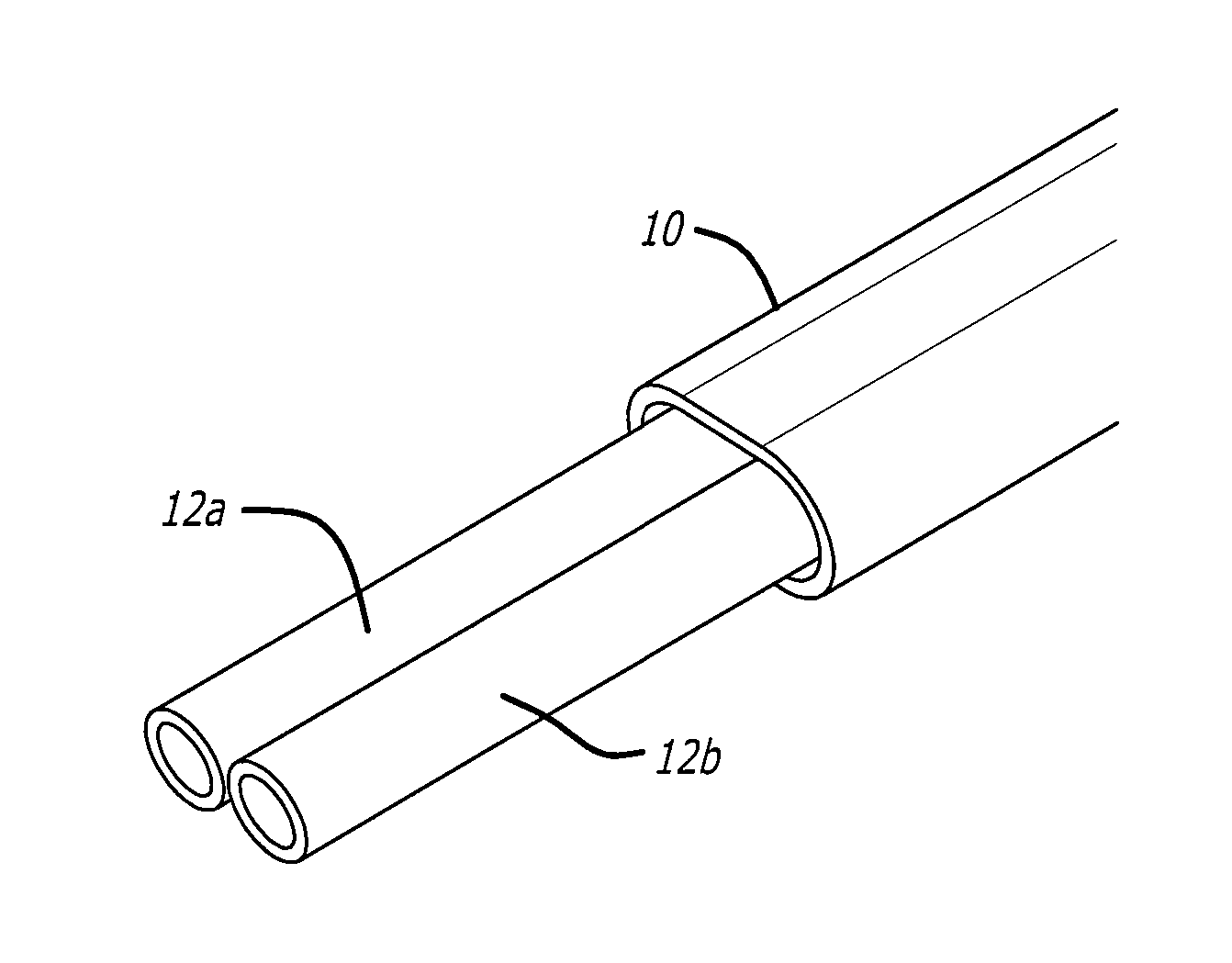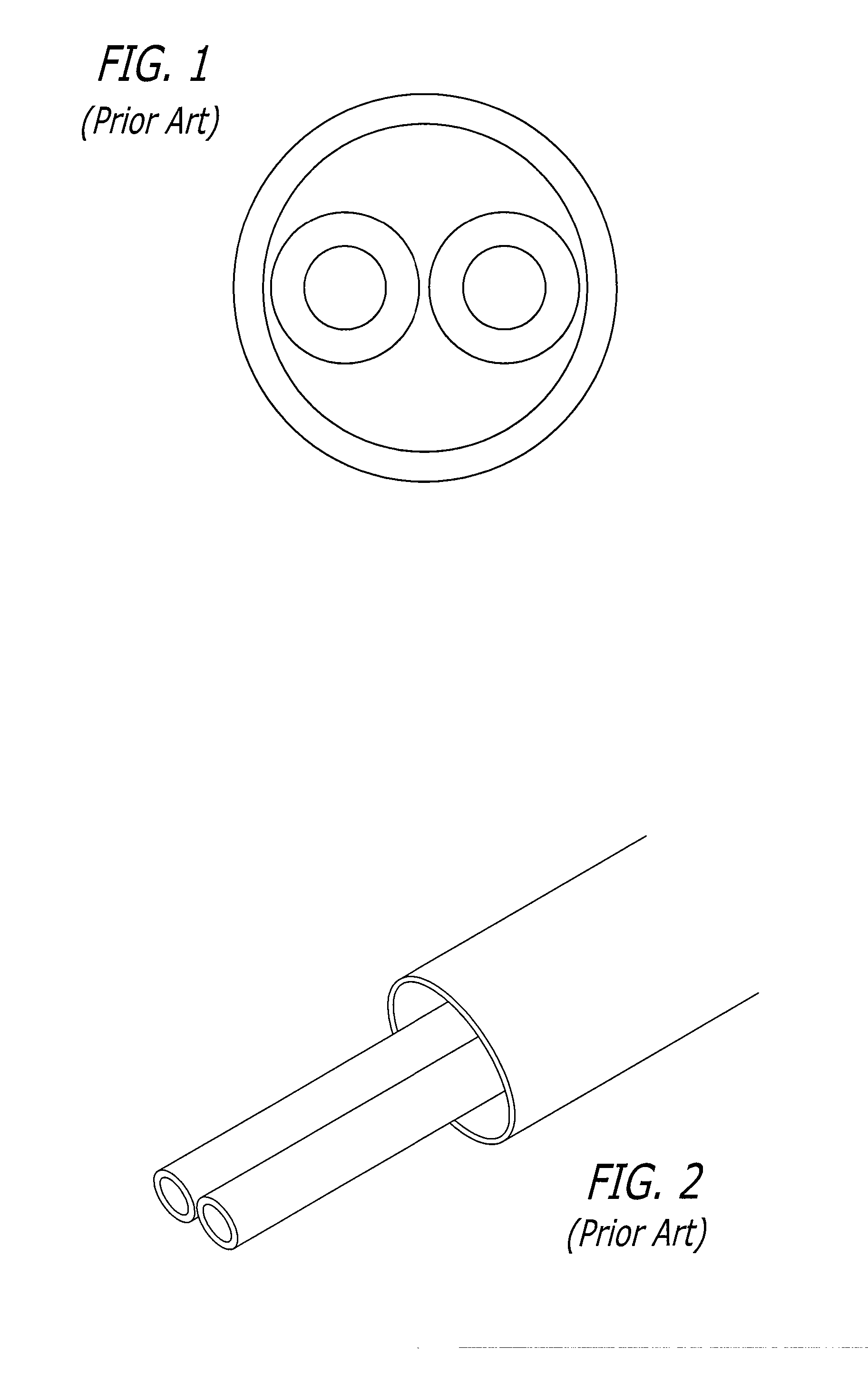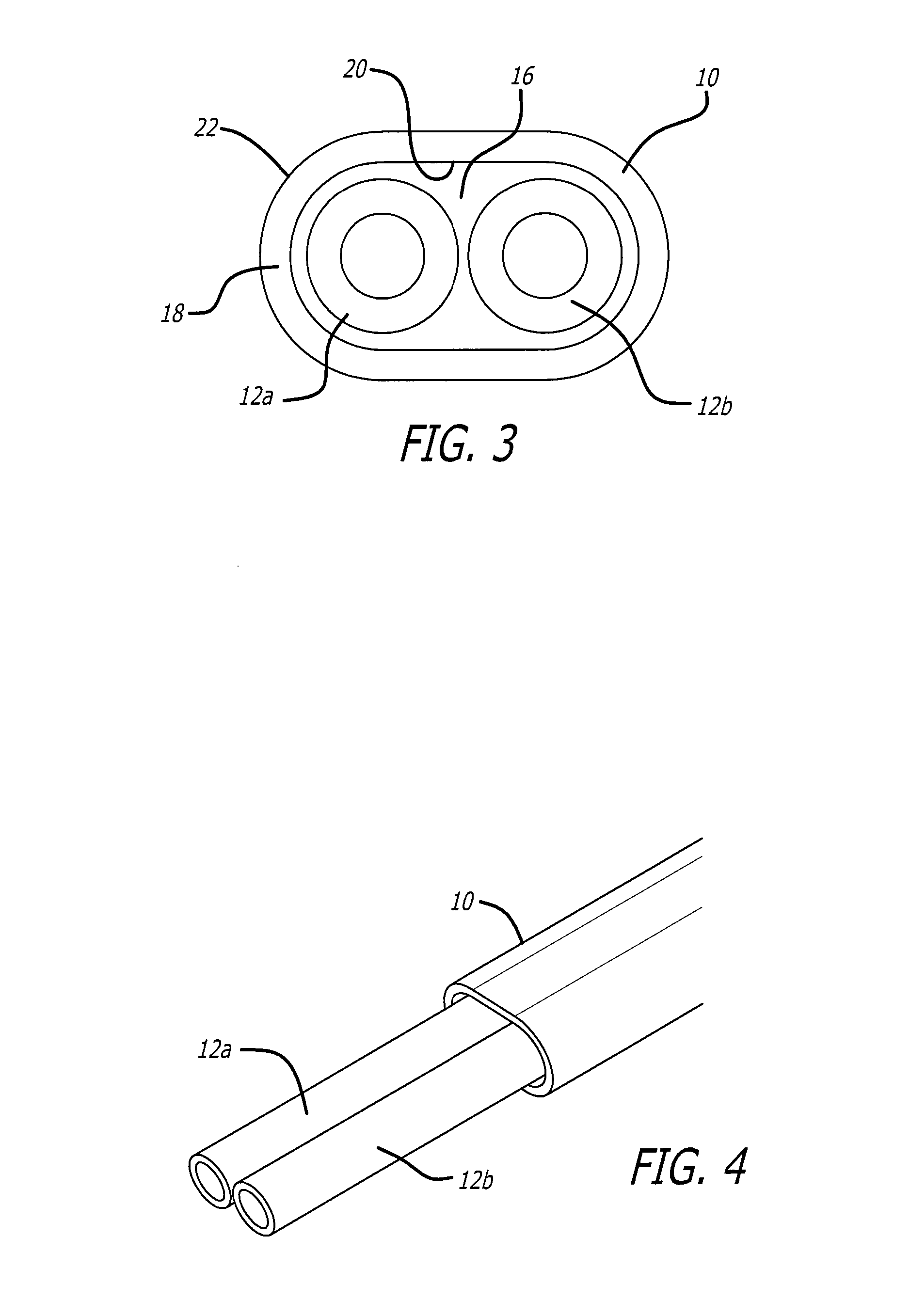Low profile guiding catheter for neurovascular applications
a low-profile, catheter-based technology, applied in the direction of catheters, multi-lumen catheters, coatings, etc., can solve the problems of critical puncture size, and achieve the effect of small puncture size, small profile, and small cross-sectional area
- Summary
- Abstract
- Description
- Claims
- Application Information
AI Technical Summary
Benefits of technology
Problems solved by technology
Method used
Image
Examples
Embodiment Construction
[0018]Referring to the drawings, which are provided by way of example, and not by way of limitation, the present invention provides for a low profile guiding catheter 10 having a non-round shape for use in delivery of multiple microcatheters 12a, 12b for treatment of neurovascular defects, such as for treatment of aneurysms. The low profile guiding catheter of the present invention includes torque transmittal guidance walls 14a, 14b that are flexible linearly but not circumferentially, and that are neither collapsible nor kinkable. By changing the shape of the cross section of the catheter lumen 16 we can accommodate more standard devices into a smaller catheter.
[0019]For example, in order to deliver two microcatheters having a 0.017″ inner diameter lumen into a brain vasculature, physicians typically select a guiding catheter having a 6Fr or equivalent 0.070″ inner diameter lumen. With our invention, by changing the exterior cross section shape of the lumen of the catheter from a c...
PUM
| Property | Measurement | Unit |
|---|---|---|
| length | aaaaa | aaaaa |
| flexible | aaaaa | aaaaa |
| shape | aaaaa | aaaaa |
Abstract
Description
Claims
Application Information
 Login to View More
Login to View More - R&D
- Intellectual Property
- Life Sciences
- Materials
- Tech Scout
- Unparalleled Data Quality
- Higher Quality Content
- 60% Fewer Hallucinations
Browse by: Latest US Patents, China's latest patents, Technical Efficacy Thesaurus, Application Domain, Technology Topic, Popular Technical Reports.
© 2025 PatSnap. All rights reserved.Legal|Privacy policy|Modern Slavery Act Transparency Statement|Sitemap|About US| Contact US: help@patsnap.com



